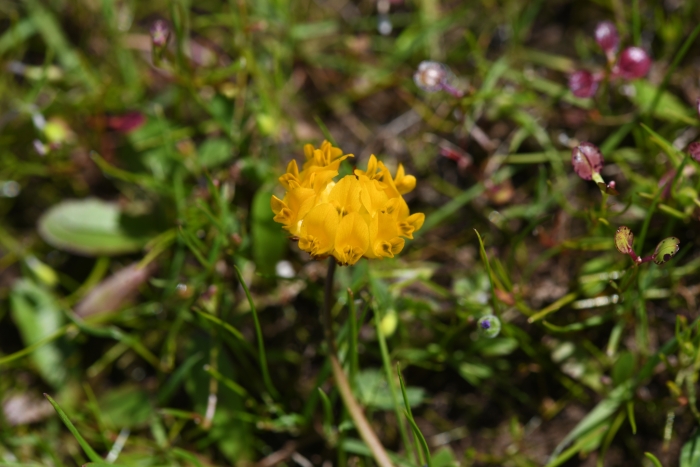Jim’s Clover
(Trifolium jokerstii)
Jim’s Clover (Trifolium jokerstii)
/
/

Chloe and Trevor Van Loon
CC BY 4.0
Image By:
Chloe and Trevor Van Loon
Recorded By:
Copyright:
CC BY 4.0
Copyright Notice:
Photo by: Chloe and Trevor Van Loon | License Type: CC BY 4.0 | License URL: http://creativecommons.org/licenses/by/4.0/ | Rights Holder: Chloe and Trevor Van Loon | Publisher: iNaturalist | Date Created: 2024-04-07T13:15:17-07:00 |















Estimated Native Range
Summary
Trifolium jokerstii, commonly known as Jim’s clover or Butte County golden clover, is an annual herb endemic to the grasslands and vernal pool areas of Butte County, California, particularly near Oroville. It was formally recognized as a distinct species in 1998. Jim’s clover typically grows in seasonally moist habitats that dry out in the summer, such as vernal pools and ephemeral creek beds, which are critical for its life cycle. This rare clover reaches a modest height of up to 12 inches (30 cm) and is characterized by its hairless stems, oval leaves with a distinctive chevron mark, and large, lance-shaped stipules. The inflorescence is a dense head of at least five golden yellow flowers, which bloom from April to May, adding a splash of color to the spring landscape.
Jim’s clover is not widely cultivated due to its rarity and specific habitat requirements, but it could be of interest for native plant enthusiasts or for restoration projects aimed at preserving local biodiversity. It requires seasonally moist soils that can dry out, mimicking its natural vernal pool habitat, and full sun to part shade conditions. While not commonly used in gardens, it can serve as an indicator species for the health of vernal pool ecosystems. As with many vernal pool species, it faces threats from habitat loss and alteration.CC BY-SA 4.0
Jim’s clover is not widely cultivated due to its rarity and specific habitat requirements, but it could be of interest for native plant enthusiasts or for restoration projects aimed at preserving local biodiversity. It requires seasonally moist soils that can dry out, mimicking its natural vernal pool habitat, and full sun to part shade conditions. While not commonly used in gardens, it can serve as an indicator species for the health of vernal pool ecosystems. As with many vernal pool species, it faces threats from habitat loss and alteration.CC BY-SA 4.0
Plant Description
- Plant Type: Herb
- Height: 0.5-1 feet
- Width: 0.75-1 feet
- Growth Rate: Moderate
- Flower Color: Yellow
- Flowering Season: Spring, Summer
- Leaf Retention: Deciduous
Growth Requirements
- Sun: Full Sun, Part Shade
- Water: Medium
- Drainage: Medium
Common Uses
Bee Garden, Low Maintenance
Natural Habitat
Endemic to the grasslands and vernal pool areas of Butte County, California
Other Names
Common Names: Jokerst’s Clover, Jim’s Clover
Scientific Names: , Trifolium jokerstii,
GBIF Accepted Name: